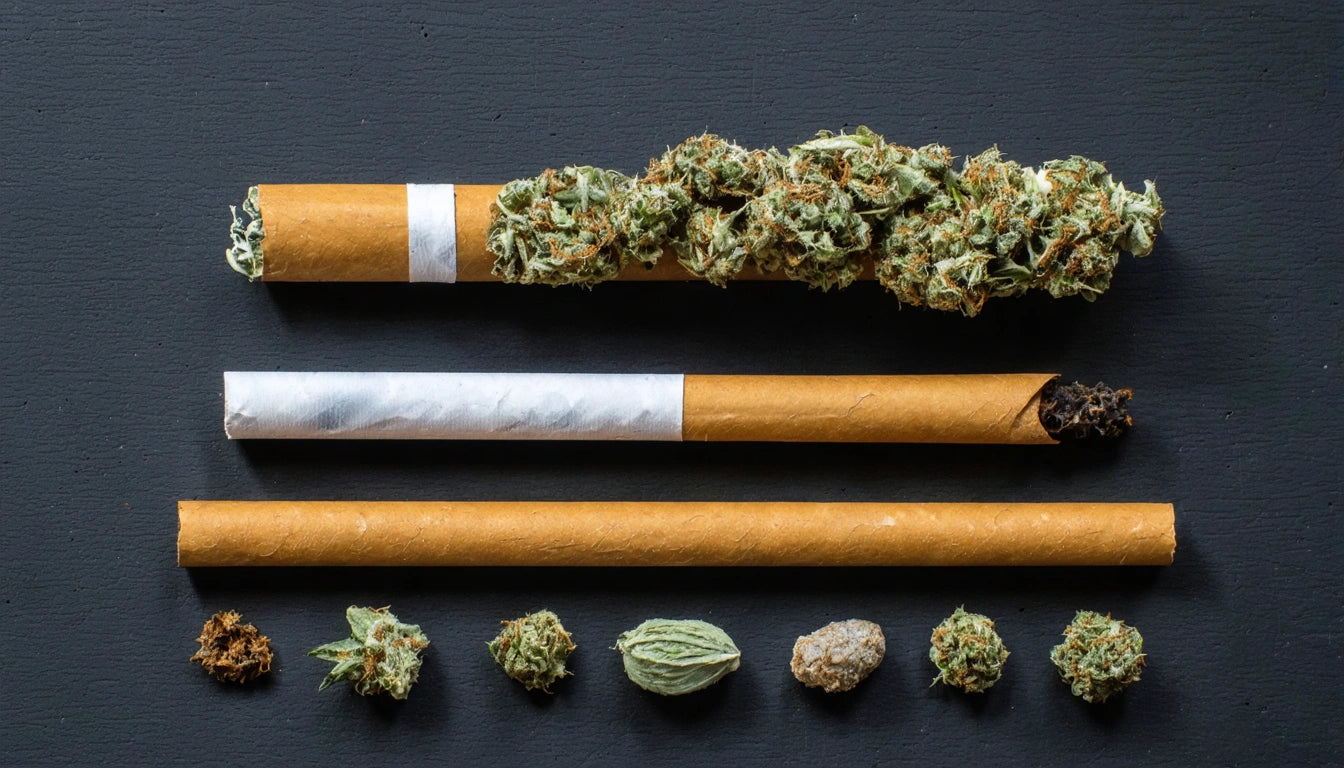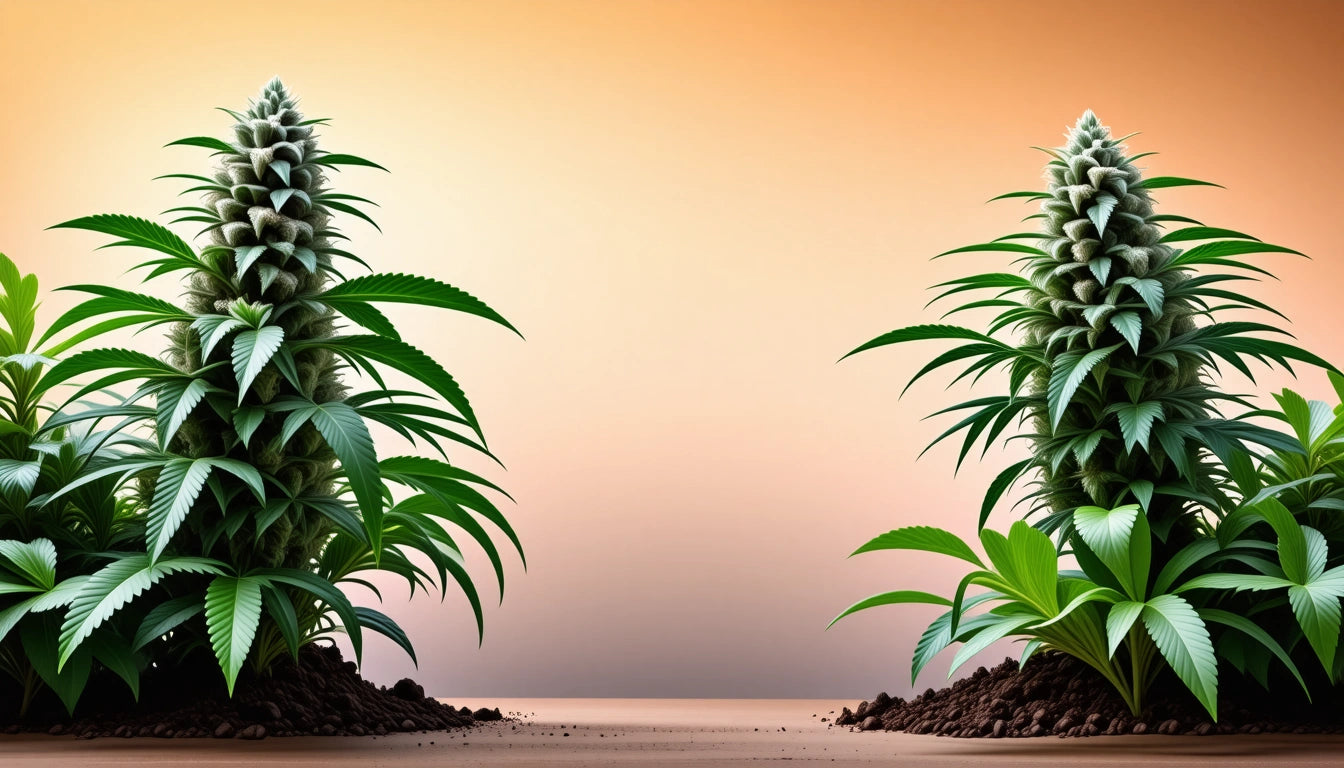Table of Contents
- Basics of Cannabis Rolling: Definitions and Components
- Materials and Composition: What Goes Into Each
- Effects and Experience: How They Differ
- Cultural Significance and Regional Preferences
- Health Considerations and Consumption Methods
- Preparation Techniques and Best Practices
- The Future of Cannabis Consumption: Beyond Traditional Rolling
Understanding the Differences: Joint vs Blunt vs Spliff
Cannabis consumption methods have evolved significantly over centuries, with rolled options remaining among the most popular and accessible. Understanding the distinctions between joints, blunts, and spliffs helps consumers make informed choices based on their preferences, desired effects, and social context. Each option offers a unique experience through different materials, preparation methods, and cultural associations.
Basics of Cannabis Rolling: Definitions and Components
At their core, joints, blunts, and spliffs are all hand-rolled cannabis products, but they differ in fundamental ways that affect everything from flavor to potency.
Joint Defined
A joint consists of ground cannabis flower rolled in thin, lightweight rolling paper. Joints typically contain only cannabis and sometimes a filter or tip at one end. They're generally smaller in size compared to blunts and burn relatively quickly. As outlined in this comparison of blunts and joints, joints are often preferred for their pure cannabis experience without the influence of tobacco.
Blunt Defined
Blunts use cigar wraps or hollowed-out cigars filled with ground cannabis. The tobacco leaf wrapper distinguishes blunts from other rolling methods. They're typically larger, burn slower, and provide both cannabis and nicotine effects. Understanding blunts requires recognizing their dual-substance nature.
Spliff Defined
A spliff represents a hybrid approach, containing both cannabis and tobacco mixed together inside rolling paper. This spliff vs joint comparison highlights how spliffs offer a balanced experience between the pure cannabis of joints and the tobacco-wrapped cannabis of blunts.
Materials and Composition: What Goes Into Each
The materials used in each rolling method significantly impact flavor, burn rate, and overall experience.
Joint Materials
Joints utilize thin rolling papers made from materials like rice, hemp, flax, or wood pulp. Many consumers use cardboard filters or glass tips to improve airflow and prevent plant material from entering the mouth. For precise preparation, accurate measurement using digital scales ensures consistent dosing and even burning.
Blunt Materials
Blunt wraps come from tobacco leaves or tobacco-based papers, often flavored to enhance the smoking experience. Traditional blunts use hollowed-out cigars, while modern consumers might choose pre-made blunt wraps for convenience. This guide to blunt options explores the variety of materials available.
Spliff Materials
Spliffs combine elements from both joints and blunts. They use rolling papers like joints but contain a mixture of ground cannabis and tobacco. The ratio varies based on personal preference, with European spliffs traditionally containing more tobacco than their North American counterparts.
Effects and Experience: How They Differ
When comparing blunt vs joint vs spliff, the effects and overall experience vary considerably due to their different compositions.
- Joints provide a pure cannabis experience, with effects solely from the strain being used. The high tends to be cleaner without tobacco's influence.
- Blunts deliver a combined effect from both cannabis and the nicotine in the tobacco wrap. This creates a distinctive head rush alongside the cannabis high.
- Spliffs offer a balanced experience between cannabis relaxation and tobacco stimulation. The tobacco content often creates a more energetic high compared to pure cannabis.
When examining spliff vs blunt differences, the main distinction lies in how the tobacco is incorporated: blunts contain it only in the wrapper, while spliffs mix it directly with the cannabis.
Cultural Significance and Regional Preferences
Regional and cultural factors heavily influence preferences between these three rolling methods:
North American Trends
In North America, particularly the United States, joints and blunts dominate the scene. Blunts gained popularity through hip-hop culture in the 1990s, while joints remain the classic choice for purists. Spliffs are less common but still have dedicated followers.
European Preferences
Throughout Europe, particularly in countries like the Netherlands and Spain, spliffs are the traditional choice. This preference stems from the region's history of mixing cannabis with tobacco, partly due to the prevalence of hash over flower in earlier decades.
Global Evolution
As cannabis legalization spreads globally, regional preferences continue to evolve. Pure cannabis consumption methods are gaining popularity as health awareness increases, while traditional methods maintain cultural significance in their respective regions.
Health Considerations and Consumption Methods
When evaluating joint vs blunt vs spliff from a health perspective, several factors come into play:
Tobacco Content
The primary health distinction involves tobacco content. Joints contain no tobacco, making them the preferred option for those avoiding nicotine. Both blunts and spliffs introduce tobacco and its associated health risks, including addiction potential.
Combustion Concerns
All three methods involve combustion, which produces tar and carcinogens. This remains a health consideration regardless of which rolling method you choose. This comparison of blunts vs joints addresses some of these health considerations in detail.
Preparation Techniques and Best Practices
Proper preparation significantly impacts the quality of any rolled cannabis product:
Grinding Consistency
For all three types, proper grinding ensures even burning and consistent effects. Too fine a grind might restrict airflow, while too coarse a grind can create an uneven burn.
Rolling Technique
Each format requires slightly different rolling techniques:
- Joints benefit from even distribution and proper filter placement
- Blunts require careful handling of the tobacco leaf to prevent tearing
- Spliffs need thorough mixing of cannabis and tobacco for consistent effects
As explained in this guide on blunt vs pre-roll vs joint differences, mastering these techniques takes practice but yields better results.
The Future of Cannabis Consumption: Beyond Traditional Rolling
While joints, blunts, and spliffs maintain their popularity, the cannabis consumption landscape continues to evolve. Pre-rolls offer convenience for those who appreciate traditional smoking without the preparation work. Vaporizers provide alternatives for health-conscious consumers looking to reduce combustion-related risks.
The blunt vs spliff vs joint debate will likely continue as personal preference, cultural factors, and health considerations shape individual choices. As the cannabis industry matures, expect innovations that preserve the ritual aspects of traditional rolling while addressing health and convenience concerns.
Whether you prefer the pure experience of a joint, the robust character of a blunt, or the balanced effects of a spliff, understanding these differences helps you make informed choices that enhance your cannabis experience.











Leave a comment
All comments are moderated before being published.
This site is protected by hCaptcha and the hCaptcha Privacy Policy and Terms of Service apply.